Seasons – July 2020
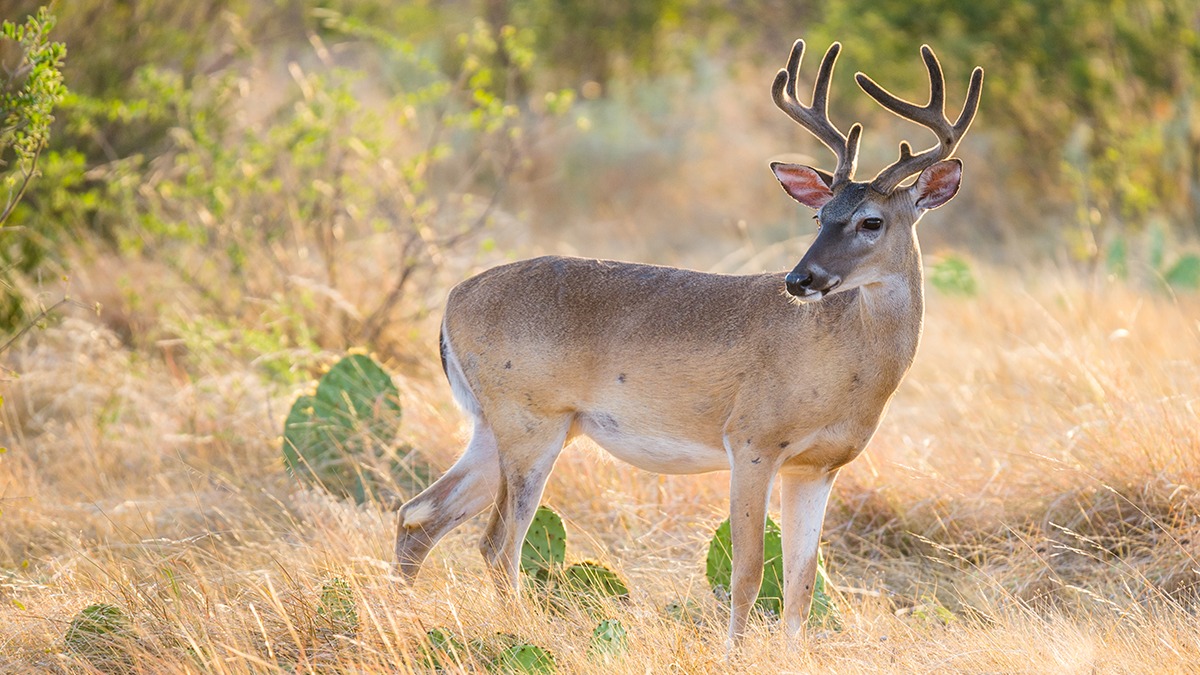
From the Plateau Land & Wildlife Management Team
Though the hunting season is not yet upon us, Summer is the perfect time to be conducting your wildlife management activities for white-tailed deer. Many of you have had the joy of seeing fawn on your property this spring! An important part of managing for these deer and fawn is providing a quality habitat that they can live and thrive in.
So as you relax and soak up this hot Texas sunshine, enjoy this issue of Seasons full of considerations for managing native deer. Read articles ranging from deer census activities, information and updates on Chronic Wasting Disease, risk management considerations for those hunting properties, and more!
We hope you enjoy the read and everything this summer has to offer, and if there’s any way Plateau can help you protect, enhance or better enjoy your land during this special season, just give us a call. We’ll be here when you need us.
Until next Seasons,
The Plateau Team
Table of Contents
Counting Deer
Wildlife Management Activity Reminder: Deer Surveys
An Update on Chronic Wasting Disease
Know Your Risk, Save Your Land
Plateau Land Group Featured Listing
News for Texas Landowners
Counting Deer
By Sarah Kahlich, AWB, Senior Wildlife Biologist, Registered Property Tax Consultant
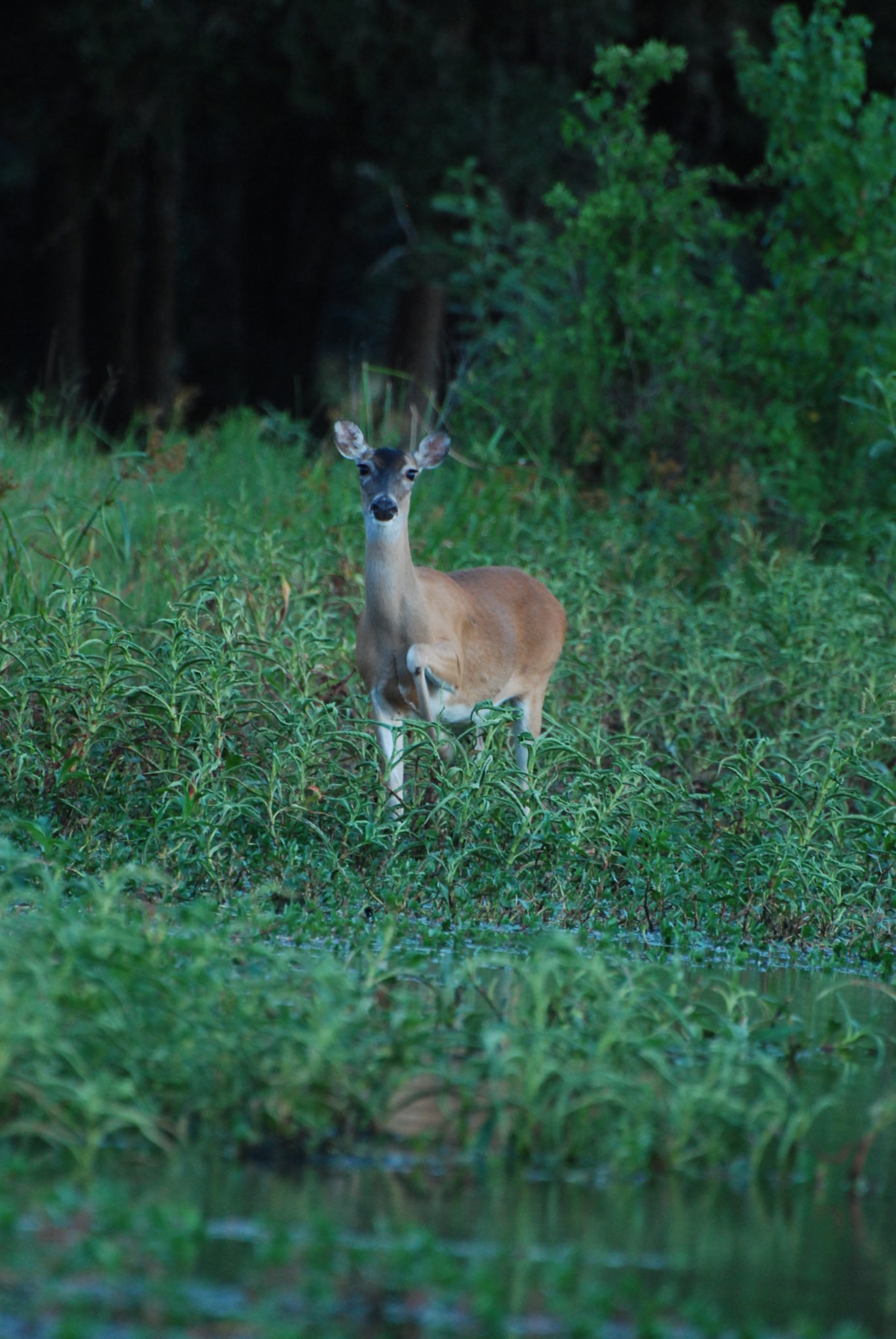 Sitting in the deer stand, waiting patiently for any deer that may want to kindly venture my direction, my mind starts to wander, as it easily does when I am not actively engaged. How many bucks and does are on this property? How many should be harvested this year? Is the population healthy and sustainable in this habitat? Endless questions zip through my mind, I should have brought a pencil and paper with me. These are probably common questions among deer hunters as they sit in a blind waiting to harvest a deer. The mind jumps to another thought, ‘I should have conducted a deer survey on my property.’
Sitting in the deer stand, waiting patiently for any deer that may want to kindly venture my direction, my mind starts to wander, as it easily does when I am not actively engaged. How many bucks and does are on this property? How many should be harvested this year? Is the population healthy and sustainable in this habitat? Endless questions zip through my mind, I should have brought a pencil and paper with me. These are probably common questions among deer hunters as they sit in a blind waiting to harvest a deer. The mind jumps to another thought, ‘I should have conducted a deer survey on my property.’
All these questions are good ones and should be going through your mind. Maintaining a healthy deer herd does not happen by chance but through proper management. If you decide to have a deer survey conducted before deer season, whether it is a camera survey or a spotlight survey, do you really know what the results mean when they come back to you? It seems straight forward, I have 15 bucks and 30 does, but when you look deeper into the survey you will find out these numbers are not as simple as you might have thought.
Considerations for Conducting Deer Surveys
It would be ideal to be able to count every single animal on your property during your survey, but like a survey of humans in the United States, not everyone participates or can be found to contribute to the results. Deer surveys are very similar in that they are samples, or an estimate, of the population. It is not a complete count and is subject to some error. Keep in mind: It is nearly impossible to obtain a complete count of deer, even when contained in a high fence. Deer cannot be rounded up in a corral like cattle and counted. Instead of relying solely on one year’s survey, it is best to rely on multiple consecutive years of survey data, called a trend. Trends are more important than the actual numbers for one year.
Trends allow you to see what your deer population has been doing in the past, if your numbers are decreasing each year and you have not harvested deer, it could be from low fawn recruitment, which could be caused by drought conditions, predation, or other reasons. High doe populations might mean you should focus more on culling does instead of bucks.
Herd Composition & Ratios
Herd composition numbers are as important as total numbers as they can greatly influence harvest recommendations. Doe:Buck ratios (sex ratios) tell us how much of the harvest should be composed of females and how many males. This number also tells us what animals may be replaced by births. A doe:buck ratio of 2:1 (2 does for every buck)is a desirable ratio, permitting good fawn production while keeping growth manageable. As the ratio increases, the number of harvestable bucks decreases and population growth can quickly get out of hand. If the ratio was 10:1 the population is skewed heavily towards females, requiring a higher doe harvest. You should almost always harvest as many, or more, does than bucks, but the actual harvest rates should be based on ratios from your surveys.
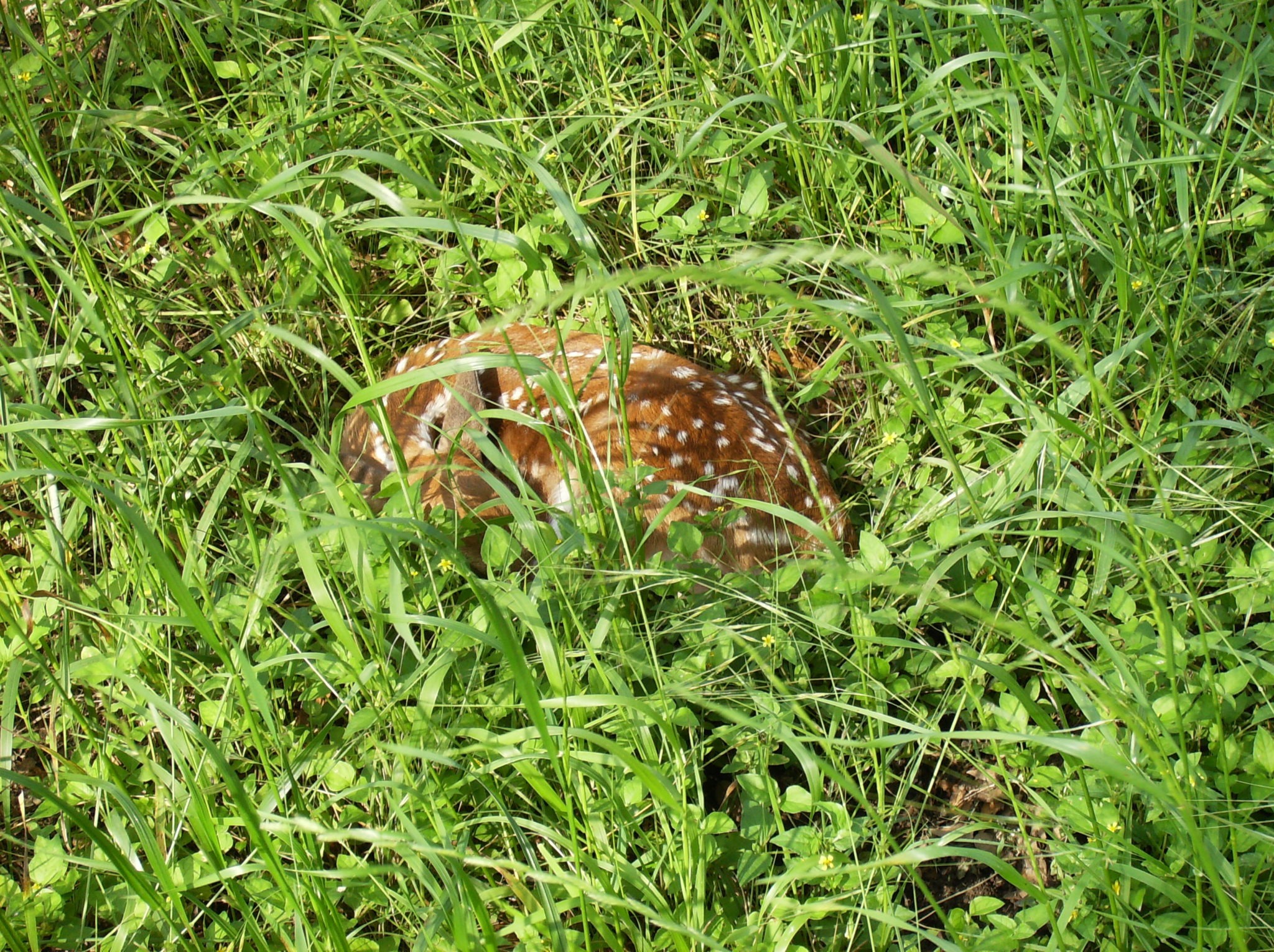 A second important ratio is Fawn:Doe, this number indicates the health of the herd, in terms of reproduction. During drought periods reproduction numbers will be low because females become stressed by the decrease in quality forbs and browse. When the conditions are favorable (timely rains, plenty of forage) white-tailed deer females tend to give birth to twins. Most survey techniques underestimate fawns. They do not show up on cameras as often as adults and they may remain hidden during spotlight surveys. This makes the fawn:doe ratio appear lower than what it may actually be. Biologists may use an assumed ratio based on history and current conditions to calculate harvest recommendations.
A second important ratio is Fawn:Doe, this number indicates the health of the herd, in terms of reproduction. During drought periods reproduction numbers will be low because females become stressed by the decrease in quality forbs and browse. When the conditions are favorable (timely rains, plenty of forage) white-tailed deer females tend to give birth to twins. Most survey techniques underestimate fawns. They do not show up on cameras as often as adults and they may remain hidden during spotlight surveys. This makes the fawn:doe ratio appear lower than what it may actually be. Biologists may use an assumed ratio based on history and current conditions to calculate harvest recommendations.
Sex ratios and fawn crops are best determined from incidental observations. Bucks, does, and fawn observations collected during daylight hours while driving or sitting in blinds are an important supplement to spotlight or remote camera surveys as they help more accurately depict these ratios. Assumed ratios may be used if ratios are far too low or high and do not seem realistic for the property. If very low fawn ratios are used, it could result in not harvesting enough deer. The following year the deer population might appear to have exploded. Doing this repeatedly can result in deer overpopulation that exhausts available forage, leading to the need to harvest even more deer to help keep the population at acceptable numbers. In the Edwards Plateau and many other parts of Texas west of I-35, under-harvesting is a much greater concern than overharvesting as deer populations are more likely to be too high rather than too low.
Deer Survey Results
The most important thing to keep in mind when conducting a camera survey or a spotlight survey, whether you are doing it yourself or using Plateau, is that the results are not a complete count of the deer on your property, only an estimate. Research shows that we (biologists included) miss seeing a lot of deer during spotlight surveys. Some deer are excellent at avoiding detection when you conduct a survey, especially fawns. Since camera surveys are an attempt at a complete count, we recommend turning off feeders that will not be used for the survey at least 1-2 weeks prior to a camera survey so deer can become accustomed to using the feeders designated for the camera survey. Exotics on your property can deter white-tailed deer from utilizing a feeder as well.
If your survey reports seem low compared to the number of bucks, does, and fawns you have seen on your property, it is not uncommon and does not warrant a huge concern in any given year. Utilizing multiple methods increases your observations and can be used to increase the reliability of the survey and the resulting recommendations. To accomplish this, record observations when you are driving or walking around your property during the daylight, possibly conducting dedicated daylight drive surveys through your property. Look at the vegetation on your property – checking browse on desirable vegetation is an excellent indicator of the deer population. If you are seeing heavy browse pressure on all the new growth, chances are there are too many deer. Keep harvest records; the condition of deer being harvested says a lot about what is happening in your deer herd. Recording weights, antler size, and body conditions are important, but each deer should be aged to at least three categories – young (0.5-1.5), middle-aged (2.5-3.5), and mature (4.5+). Tooth-wear aging doesn’t do a great job of nailing down the actual age in years, but it can let you put deer into these three categories.
In Summary: All survey information is most useful as trend data. Keeping yearly survey information will help make your trend data more robust, which will help in determining the impact of your current management practices. Utilize more than one survey method – the more data you collect the better your harvest recommendations will be. Not every deer will show up on camera. Just like you may see signs of hogs on your property, not seeing any on your camera or during your spotlight survey does not mean they are not there. Surveys are estimates and are subject to some error, but when conducted annually, they provide useful information for setting your desired harvest and monitoring your deer herd.
Happy Hunting!
Back to TopBack to Top
Wildlife Management Activity Reminder: Deer Surveys
By Kameron Bain, Landowner Account Manager
 Maintaining a healthy deer herd that is balanced with available habitat does not happen by chance in most of Texas. It requires active management. Part of that proper management may include deer surveys.
Maintaining a healthy deer herd that is balanced with available habitat does not happen by chance in most of Texas. It requires active management. Part of that proper management may include deer surveys.
While it would be ideal to be able to count every single animal on your property, it is virtually impossible. A survey is only an estimate, not a complete count, and can be higher or lower than the real population. Because of this, it is best to base your decisions on trends from multiple, consecutive years of survey data. Trends are more important than actual numbers from a single year, so plan to conduct surveys on a regular basis.
What options do I have?
- Spotlight Surveys: These are the familiar and “traditional” surveys for counting deer. The concept is simple – drive around at night with a spotlight and count all the deer you see – but there is more to it than that. The most common version is a strip-transect method, which just means you drive a set route and calculate how much land you can see from the vehicle, typically in 1/10th mile increments. If the survey route is set up properly, this method requires minimal training and can easily be conducted by landowners. A newer technique, called distance sampling, can be used on a driving spotlight survey as well. This version requires much more training and experience, but in the right situation it is a better choice for estimating populations.
- Camera Surveys: Inexpensive technology has made trail cameras, aka camera traps, widely available and popular for monitoring wildlife activity. Deployed properly, these cameras can also be used to estimate populations of deer. This method attempts to make an actual census (complete count) of bucks in an area and uses the ratio of males to females and fawns to females to estimate the rest of the population. The pictures make it easier to determine the age structure and quality of bucks. Because this survey requires 1 camera/150 acres of land, it is well suited to smaller properties (<500 acres), where spotlight surveys are often impractical. There is no limit to the size of the property for this method, it just takes a lot more cameras, and a lot more pictures to sort through, on larger properties. The set up and execution is fairly simple, though analyzing the pictures takes some training.
- Helicopter Surveys: These work best on very large properties with limited tall vegetation (South Texas, West Texas, and the Rolling Plains). Helicopter surveys may use distance sampling or strip-transect sampling much like spotlight surveys. In some cases, a complete count is attempted by covering the entire property, with the understanding that some deer will be missed. Obviously, a pilot is required, as is training at varying levels, depending on the technique, so these surveys are typically conducted by professionals.
In Addition:
- Conduct herd composition counts. These estimates can greatly influence harvest recommendations. Doe:Buck ratios (sex ratios) indicate the potential for future population growth. Fawn:Doe numbers indicate the health of the herd, in terms of reproduction. Most survey techniques underestimate fawns as they do not show up on cameras as often as adults and may remain hidden during spotlight surveys. Sex ratios and fawn crops are best determined from incidental observations. Raw counts of bucks, does, and fawns seen during daylight hours while driving or sitting in blinds are an important supplement to spotlight or remote camera surveys as they help more accurately determine herd composition.
- Look at the vegetation on your property. Checking browse pressure on desirable vegetation is an excellent indicator of the deer population. If deer are eating a lot of low quality forage and there are no desirable shrubs to be found, then you have too many deer, regardless of what your surveys indicate.
- Keep harvest records. The condition of deer harvested says a lot about what is happening in your deer herd as well. If it is a lean year for rain but the deer are still heavy with fat, then your population is probably in pretty good shape. Recording field dressed weight, antler size, and body conditions are important. You should also age each deer to one of three categories – young (0.5-1.5), middle-aged (2.5-3.5), and mature (4.5+).
Deer surveys typically start in August and there is a limited window (August-October) in which to get them done and determine harvest recommendations before the general deer season starts.
You don’t have to be perfect at your Wildlife Management activities, but you (or someone you hire) do have to do them. If you need help or have questions please contact us at (512) 894-3479 or [email protected]
Back to TopBack to Top
An Update on Chronic Wasting Disease
By Shane Kiefer, Director of Ecological Services, Certified Wildlife Biologist and Registered Property Tax Consultant
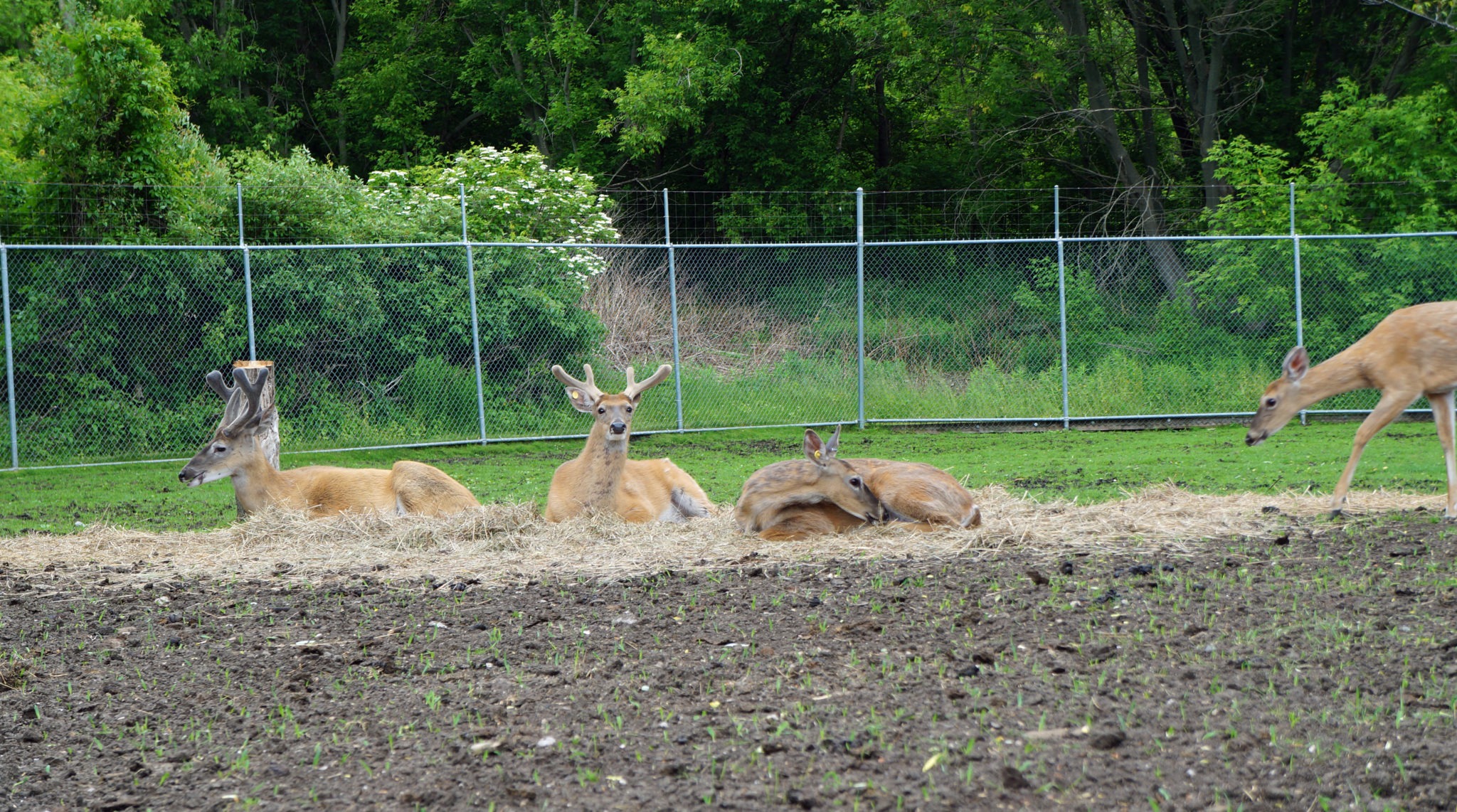 Hunting in Texas is currently over a two-billion-dollar industry that is supported by rural lands and landowners that will persist as long as the access is available. Since its 2012 emergence in Texas in a free-ranging mule deer population, chronic wasting disease (CWD) has changed the game for some hunters across the state. This is an update to a 2017 article about regulations and CWD management by Texas Parks and Wildlife Department (TPWD) and the Texas Animal Health Commission (TAHC) in an attempt to control the spread of CWD.
Hunting in Texas is currently over a two-billion-dollar industry that is supported by rural lands and landowners that will persist as long as the access is available. Since its 2012 emergence in Texas in a free-ranging mule deer population, chronic wasting disease (CWD) has changed the game for some hunters across the state. This is an update to a 2017 article about regulations and CWD management by Texas Parks and Wildlife Department (TPWD) and the Texas Animal Health Commission (TAHC) in an attempt to control the spread of CWD.
What Hasn’t Changed
Chronic wasting disease is still here and still spreading. The CWD tracking page lists 169 positive cases of CWD in Texas, including 1 case in a red deer and 3 in elk. That’s up from 50 confirmed cases in mid-2017. The most recent discovery in a free-range population was in Val Verde County in early 2020. The neurological disease is only seen in the Cervidae family which includes deer, elk, and moose. The disease seems to be limited to a subset of cervids including all those native to North America as well as sika deer and red deer. The CWD prions (infectious, misfolded proteins) are shed in the waste and body fluids of infected animals and can persist in the environment long after any infected individuals are gone. CWD has been reported in 24 states since its discovery in Colorado in 1967. The Centers for Disease Control recommends testing susceptible species harvested from known CWD locations before consumption. There are still no recorded transmissions to humans and animal research models offer no clear evidence that transmission is possible. The good news is that the regulations and management TPWD and TAHC have set in place for CWD have limited the spread in Texas to a handful of counties.
Information for Hunters
CWD Zones with mandatory sampling will continue in the future within certain areas of Texas. For the 2019-2020 hunting season, these areas included the Trans-Pecos, the Panhandle, South-Central Texas, and Val Verde County. Deer harvested within these containment and surveillance zones must be brought to a TPWD check station within 48 hours after harvesting and restrictions on carcass movements apply. Deer head waivers must be obtained from a check station before transporting an intact head from any CWD zone. Along with TPWD’s regulations, the TAHC requires all susceptible exotics (red deer, sika, elk, reindeer, black-tailed deer, moose, and any subspecies and hybrids of these species) harvested statewide to be tested as well.
Future Deer Hunting in Texas
It has been 50 years since the discovery of prions in captive mule deer in Colorado. CWD has spread to 24 states in the U.S., as well as Canada, South Korea, and Norway. Mandatory regulations from TPWD and TAHC will aid in controlling the spread of the disease to animals, as well as to the environment, although it may never disappear from areas it now inhabits, due to its ability to bind to minerals in the soil.
Prevalence rates in Texas are low but they will increase over time as seen in areas that have had CWD for longer periods. The disease spreads naturally in free-ranging populations but long-distance movements that result in new disease centers are best explained by human activities – the movement of deer between captive facilities or movement of infected carcasses/tissue. While we are still learning about long-term impacts on animal populations, there is evidence that the disease can result in steep declines over time. The slow-moving nature of the disease means answers about real-world impacts will come slowly.
As always, Plateau’s mission is to assist “owners of rural land to increase value by conserving, restoring and/or improving their property’s native wildlife and habitats through science-based solutions.” Unhealthy deer should be reported immediately to TPWD authorities, but if you have concerns or questions please give us a call at (512) 894-3479.
One of the better articles you can read about CWD is on the Texas Wildlife Association’s website. The Texas Parks and Wildlife website has abundant resources about CWD and current rules and regulations set in place for hunting in Texas can be found in the Outdoor Annual.
Back to TopBack to Top
Know Your Risk, Save Your Land
Risk Management Considerations for Landowners by Braun & Gresham
 Today’s owner of rural land has many potential risks to consider. As friends, family, and strangers enjoy country getaways for hunting, swimming, and off-road adventures, you could be putting yourself and your guests at risk. Owning your land in your own name could expose your property to creditor’s claims brought about by bad business debt, a medical emergency, a negligent injury to others, a divorce, bankruptcy, or numerous other personal or business crises. Without proper precautions and smart risk management in place, you could be risking a forced liquidation of family land or loss of other major assets. Braun & Gresham can help manage the risk of losing your assets, even your land, with risk evaluations, recommended policies and procedures, and strategic legal protections. To claim your rights, you must first know your risk.
Today’s owner of rural land has many potential risks to consider. As friends, family, and strangers enjoy country getaways for hunting, swimming, and off-road adventures, you could be putting yourself and your guests at risk. Owning your land in your own name could expose your property to creditor’s claims brought about by bad business debt, a medical emergency, a negligent injury to others, a divorce, bankruptcy, or numerous other personal or business crises. Without proper precautions and smart risk management in place, you could be risking a forced liquidation of family land or loss of other major assets. Braun & Gresham can help manage the risk of losing your assets, even your land, with risk evaluations, recommended policies and procedures, and strategic legal protections. To claim your rights, you must first know your risk.
Protect Your Assets
To avoid the liability associated with unintended accidents or unresolved debts, every landowner should have a comprehensive risk management program in place. A risk management program enables landowners to identify and assess problems, and to reduce the probability and exposure to risks specific to their land use. In addition, having a risk management program in place allows for a landowner to feel more comfortable with inviting guests on to her property, and decreases the likelihood of an accident or injury on the land. It can also protect your land from other personal and business creditors.
The Braun & Gresham Comprehensive Risk Management Plan
Unfortunately, there’s no silver bullet for protecting your assets. You have to build a wall against liability, one brick at a time. There are statutory protections for landowners, but there are certain actions that you must take to reap the full benefits of the law. Having a strong risk management program in place is the best way to protect yourself.
The following is a list of key mechanisms we use at Braun & Gresham to minimize risk and to protect our clients and their assets, especially their rural land (the “Ranch”):
- Creation and maintenance of a business entity
- Qualifying for statutory protections
- Qualifying under Texas homestead law
- Developing waivers
- Providing signage
- Developing lease agreements
- Review of fees charged in operations
- Insurance review
- Identifying and mitigating potential hazards
- Inspection recommendations
Not every landowner may need all of these tools, but a 30-minute initial consultation with one of Braun & Gresham’s attorneys should allow you to begin matching your needs with the appropriate legal mechanism(s). The peace of mind a well-developed risk management program can bring you, and the numerous problems that it can solve is usually worth the effort and cost to protect your precious land.
You can also contact Braun & Gresham, Attorney and Counselor, Joanne Hatton at (512) 894-5426 to schedule your initial 30-minute consultation today!
Back to TopBack to Top
Plateau Land Group Featured Listing
Prime Picturesque Acreage
42 Acres, $331,500
Moody, Bell County, TX
At one of the higher elevations in Bell County, this well cared for property has fertile land with views of the surrounding countryside. The front pasture is perfect for hay and a homesite with utilities at the road, while the back acreage has two ponds, a variety of trees, and is high-fenced for game. The current game animals on the property can be purchased separately and include blackbuck antelope, a pair of Texas longhorns, three emus, two Mouflon sheep, and many fallow deer.
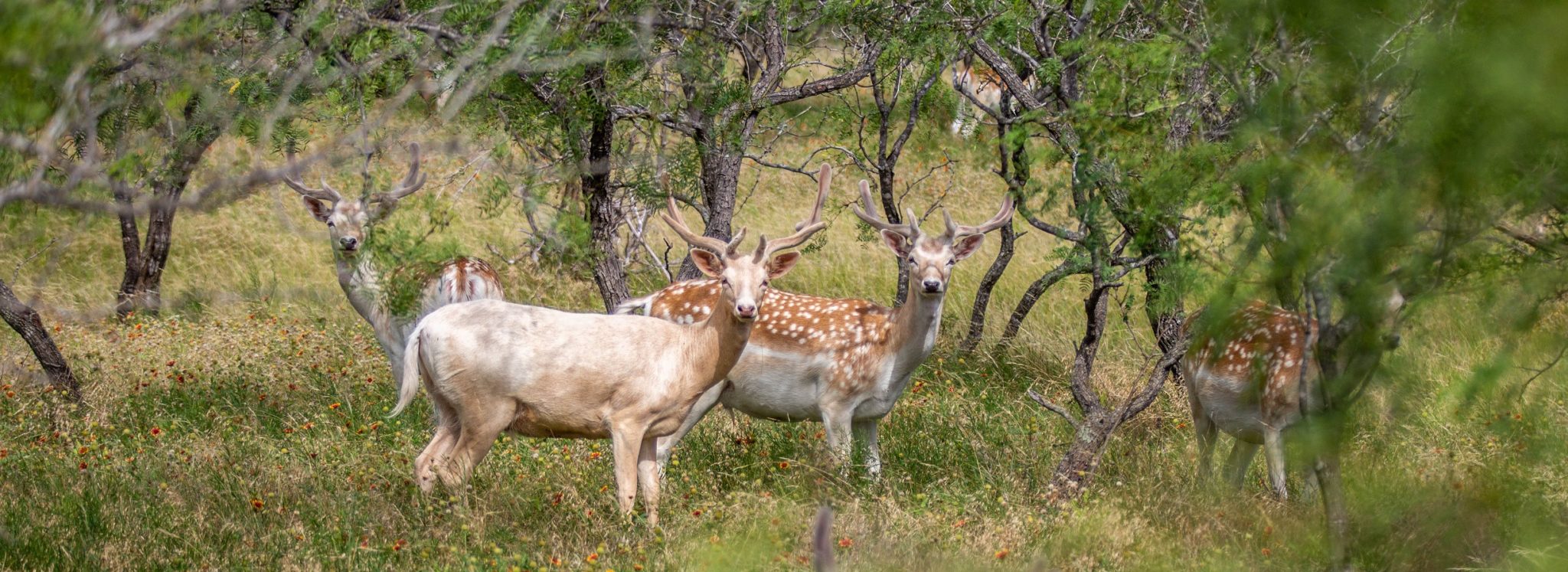
View all of Plateau Land Group’s listings.
Click here to receive Plateau Land Group’s newest listings by email.
News for Texas Landowners
Big Time Texas Hunts Offers First Ever Guided Hunting and Fishing Trip at Powderhorn WMA
Press Release by Texas Parks & Wildlife

For the first time in its 20-year history, a lucky winner has a chance to claim not one, but two one-of-a-kind experiences through the same package as part of the Big Time Texas Hunts drawing. One fortunate outdoorsman or woman and a guest can claim a guided saltwater fishing trip in tandem with a new big game hunting package at Powderhorn Wildlife Management Area, the Texas Parks and Wildlife Department’s newest WMA on Matagorda Bay.
The Powderhorn property, formerly known as Powderhorn Ranch, provides habitat for hundreds of species of birds and mammals, including the endangered whooping crane. It is also the home to thousands of acres of native coastal prairies, freshwater wetlands and salt marshes that offer vital fish and wildlife habitat. Public access to Powderhorn WMA, which was donated to the Texas Parks and Wildlife Department in 2018, is limited, but part of the property will be developed into a state park in the future…
Shhh… This Just Might Be the Prettiest Body of Water in Texas
Article by

Last summer, I drove into the Nueces Canyon from Leakey on Ranch Road 337, one of the storied Twisted Sisters drives favored by weekend motorcyclists. I was looking for what I suspected was one of the most pristine bodies of water in Texas, a Hill Country river hardly anyone ever talks about.
I arrived in Camp Wood, population 736, a century-old town originally known as a hub for raising sheep and goats. Most of the storefronts along State Highway 55—the main drag dually known as Nueces Street—were occupied, but this did not feel like the Hill Country most tourists experience. None of the businesses were gussied up, and there wasn’t a winery or distillery for miles. The newest structure was a Family Dollar. The shuttered two-story hotel, the faded sign identifying the mohair business, the empty Lindbergh Park, and the mysterious point of interest with seven flagpoles on SH 55 just north of town serve as testaments to events that transpired here on the western edge of the Hill Country over the past 250 years or so…
It’s Big, But It’s Not a ‘Murder Hornet’
Blog by Kay Ledbetter with Texas A&M AgriLife
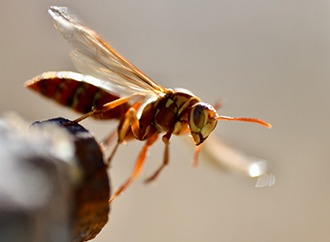
Since the release of information about Asian giant hornets, Texas A&M AgriLife entomologists are being inundated with cicada killers and other lookalike insects submitted for identification as a possible “murder hornet,” which thus far has only been found in Washington state in the U.S.
While the agency wants to continue to encourage Texans to be vigilant in watching for the Asian giant hornet, they also want to help provide guidance that will help narrow the focus.
David Ragsdale, Ph.D., chief scientific officer and associate director of Texas A&M AgriLife Research, and professor in the Department of Entomology, said many photos of Texas native cicada killers, or ground hornets, are being submitted as suspected Asian giant hornets. He said their website receives five to 10 photos a day, and agency pest management agents and specialists around the state have also been handling inquiries…
Resources for New Landowners: Aldo Leopold’s Five Tools of Wildlife Management
Blog by
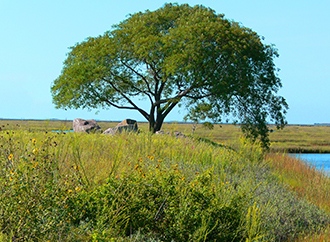
Aldo Leopold – author, philosopher, conservationist, and so-called “Father of Wildlife Ecology” – is a pillar of the modern-day wildlife conservation and management movement. His revolutionary musings on the value of land and wildlife and his intentional management techniques often appear in the discourse on wildlife management.
In Game Management, Leopold wrote, “Are we too poor in purse or spirit to apply some of it to keep the land pleasant to see, and good to live in?” This conveys a simple truth for both green and veteran landowners: land management may require hard work, but generates value for the land and our spirits. The most effective land management is that which is intentional.
Perhaps one of Leopold’s most lauded quotes also originated from this work – “The central thesis of game management is this: game can be restored by the creative use of the same tools which have heretofore destroyed it — axe, plow, cow, fire, and gun…”
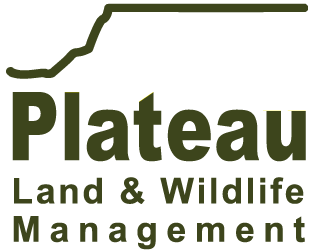





Sorry, the comment form is closed at this time.